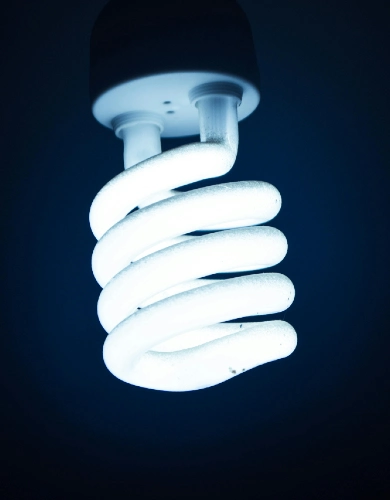A guide to energy standing charges
Energy standing charges can be an interesting concept and confusing simultaneously. What are they, and why are they applied to my energy bills? In this guide, we take an in-depth look into home energy standing charges and cover:
- What is a standing charge?
- How much is a standing charge
- Standing charge vs. no standing charge
- Suppliers who offer no standing charge contracts
- FAQs
What is a standing charge?
In the UK, energy bills often comprise two main components: the unit rate and the standing charge.
The unit rate is the cost per kilowatt-hour (kWh) of energy consumed. At the same time, the standing charge is a daily fixed fee covering the costs of maintaining a property’s energy supply, regardless of usage (i.e., you are charged even if you don’t consume any energy).
Who calculates energy standing charges?
Each energy supplier is responsible for setting their standing charges, which are based on several commercial factors, such as:
- Location: The charge varies from region to region, depending on the infrastructure that delivers power to your area.
- Maintenance: Each supplier incurs costs for using and maintaining the energy network’s pipes and wires.
- Meter readings: Each supplier is responsible for ensuring meter readings are taken. This additional cost contributed to the standard charge on your bill.
- Government payments: Suppliers contribute towards government initiatives aimed at reducing CO2 emissions.
Is it better to have a lower daily standing charge or unit rate?
Home energy suppliers don’t typically offer the same diverse range of tariffs as those in business energy.
Generally, tariffs with a lower daily standing charge tend to have higher unit rates and vice versa. For this reason, high-energy consumers typically choose tariffs with lower unit rates rather than a minimal standing charge, as the bulk of their expenditure comes from usage.
We recommend using our home energy comparison service to evaluate all suppliers. This will help you identify tariffs with cost-effective annual rates. Ensure that the total amount you’re comparing includes the daily standing charge.
Does the energy price cap affect the standing charge?
Currently, the government has set a maximum daily standing charge that a supplier can impose on its customers as part of the energy price cap.
Read our comprehensive guide on the energy price cap to find out more.
Do I pay a standing charge for my prepayment meter?
Most energy suppliers impose a daily standing charge for a prepayment meter. This charge is applicable even if you run out of credit. So when you next top up, any outstanding charges will be deducted first. Ensure you top up sufficiently to cover your energy usage and these charges.
How much are standing charges
As highlighted earlier, each energy supplier determines its standing charges.
The energy price cap stipulates the maximum amount a supplier can charge in each region. Listed below are the maximum charges set by the government for the period from 1 April 2024 to 30 June 2024, categorised by region.
| Region | Electricity - DD | Electricity - Credit | Electricity - Prepaid | Gas - DD | Gas - Credit | Gas - Prepaid |
|---|---|---|---|---|---|---|
| North West | 48.8p/day | 53.7p/day | 48.8p/day | 30.1p/day | 33.5p/day | 30.1p/day |
| Northern | 67.8p/day | 73.9p/day | 67.8p/day | 30.1p/day | 33.5p/day | 30.1p/day |
| Yorkshire | 64.2p/day | 70.1p/day | 64.2p/day | 30.1p/day | 33.5p/day | 30.1p/day |
| Northern Scotland | 58.2p/day | 63.6p/day | 58.2p/day | 30.1p/day | 33.5p/day | 30.1p/day |
| Southern | 60.3p/day | 66.4p/day | 60.3p/day | 29.3p/day | 33.5p/day | 29.3p/day |
| Southern Scotland | 60.3p/day | 65.7p/day | 60.3p/day | 30.2p/day | 33.5p/day | 30.2p/day |
| North Wales and Mersey | 63.9p/day | 69.3p/day | 63.9p/day | 30.4p/day | 33.5p/day | 30.4p/day |
| London | 38.9p/day | 42.9p/day | 38.9p/day | 30.5p/day | 33.5p/day | 30.5p/day |
| South East | 54.2p/day | 59.9p/day | 54.2p/day | 29.5p/day | 33.5p/day | 29.5p/day |
| Eastern | 47.5p/day | 52.9p/day | 47.5p/day | 29.5p/day | 33.5p/day | 29.5p/day |
| East Midlands | 53.3p/day | 58.8p/day | 53.3p/day | 29.6p/day | 33.5p/day | 29.6p/day |
| Midlands | 59.7p/day | 65.4p/day | 59.7p/day | 30p/day | 33.5p/day | 30p/day |
| Southern Western | 64p/day | 70.2p/day | 64p/day | 29.5p/day | 33.5p/day | 29.5p/day |
| South Wales | 60.3p/day | 65.7p/day | 60.3p/day | 30.2p/day | 33.5p/day | 30.2p/day |
*Excludes VAT (at 5%), and the rates are for single-rate electricity meters only.
What is the average energy standing charge?
According to the energy price cap, the average energy standing charge from 1 April 2024 to 30 June 2024 will be:
Electricity: 60 pence per day
Gas: 31 pence per day
Who has the most expensive standing charge?
The Northern Region has the highest electricity standing charge cap, set at 74p per day from 1 April 2024 to 30 June 2024 for a credit-settled electricity supply.
Who has the cheapest standing charge?
The Eastern region boasts the lowest standing charge cap, set at 47p per day from 1 April 2024 to 30 June 2024 for a direct debit settled electricity supply.
Can standing charges go up on a fixed tariff?
When you commit to a fixed tariff with your energy supplier, the standing charge remains consistent throughout your contract. However, most UK households are currently on variable tariffs where the standing charge can fluctuate but not exceed the limit specified by the energy price cap.
Does a smart meter include the standing charge?
Yes, you will still incur a daily standing charge when using a smart meter. This will appear as a reading on your smart energy monitor or display for your daily, weekly, or monthly charges.
Is there a maximum standing charge?
Yes, the government has established price limits under the energy price cap regulations. There is a maximum standing charge defined for each region.
How much are standing charges?
Yes, as mentioned above, the government has set out price caps as part of the energy price caps, and there is a maximum standing charge set per region.
Standing charge vs no standing charge
In the UK, consumers can select an energy tariff with a standing charge or one without.
While it might seem appealing to sidestep the standing charge, tariffs without one typically come with higher unit rates (pence per kWh). Therefore, the most economical choice depends entirely on your energy consumption patterns.
A tariff without a standing charge may be attractive for consumers who don’t use their property regularly, such as holiday homes or vacant properties for extended periods. Without a standing charge, they only pay for the energy they consume.
On the other hand, tariffs with a standing charge are often cheaper for the typical household with regular energy consumption (heating, cooking, electrical appliances, etc), given that the unit rates are generally lower.
So, the best thing you can do is assess your energy usage and crunch the numbers to determine the most cost-effective option based on your consumption habits!
Suppliers who offer no standing charge contracts
At present, only two suppliers are offering a no-standing charge contract: Utilita and Ebico. Remember that these are exclusive to pre-payment meter plans, which inherently have a higher unit rate than standard meters, on top of the higher unit rates of tariffs without a standing charge.
Energy standing charges – FAQs
We answer the most common questions our customers have on energy standing charges.
Why is the energy standing charge so high?
Energy standing charges have increased substantially over the last 3 years, which is a reflection of the rise in the unit rates of gas and electricity.
As the costs of maintaining the energy network have increased, so has the standing charge to cover these increasing costs.
Why has the daily standing charge doubled?
The daily standing charge has almost doubled in recent years, primarily due to energy suppliers having to absorb the costs of other suppliers going bust during the pandemic.
The added costs of accommodating more customers forced the government to raise the cap on standing charges.
A gradual reduction in the unit rate since then has resulted in a 17% reduction in the energy bills of high-consumption users, leaving those with lower consumption to bear the brunt of the costs with the increased standing charge.
This is, in fact counterproductive for Britain’s net-zero by 2050 goal as it doesn’t penalise users with high consumption as much.
Are energy standing charges the same for all suppliers?
No, energy suppliers have the discretion to set their own standing charges. However, they must ensure that these charges do not exceed the regional cap.
Are energy standing charges included in my energy bill?
Your standing charge is shown separately on your energy bill but is included in your total cost.
Are there any ways to reduce energy standing charges?
Unfortunately, you cannot reduce the standing charge set by your energy supplier since it’s a daily fee applied irrespective of your energy consumption. However, using AquaSwitch’s home energy comparison service, you can shop around and find a supplier with a standing charge that best suits your needs.

